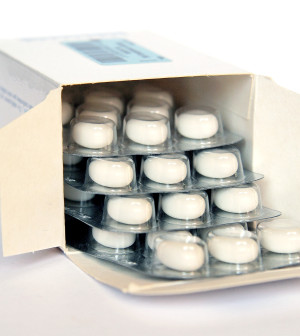- Skip Storing This Everyday Product in the Fridge Door
- Green Tea + B3 Pairing May Boost Brain Health
- Navigating Your Midlife Crisis: Embracing New Possibilities
- City Raccoons Showing Signs of Domestication
- Mapping the Exposome: Science Broadens Focus to Environmental Disease Triggers
- One Week Less on Social Media Linked to Better Mental Health
- Your Brain Changes in Stages as You Age, Study Finds
- Some Suicide Victims Show No Typical Warning Signs, Study Finds
- ByHeart Formula Faces Lawsuits After Babies Sickened With Botulism
- Switch to Vegan Diet Could Cut Your Greenhouse Gas Emissions in Half
Food Flavors May Come From Surprising Sources

When is a lemon not a lemon? When it’s “lemon flavor” in a processed food or drink.
The flavorings found in many foods and beverages may come from surprising sources. But, the U.S. Food and Drug Administration said you can find out what’s really in your foods by checking the ingredients list on product labels.
Just because a label says “maple” cereal doesn’t mean it contains any maple syrup. It could be made with maple-like flavoring that might come from maple tree sap or bark. It could even come from an herb commonly used in Indian dishes called fenugreek, the FDA said.
The cereal could also have artificial maple flavoring that doesn’t come from any natural source, the agency explained.
The only way people can know if they are tasting the real thing — a natural substitute or an artificial flavor — is to check the labels and ingredient lists on the foods they buy, the agency FDA advised.
FDA regulations allow companies to use terms like “maple-flavored” or “artificially maple-flavored” on the labels of foods that do not contain these actual ingredients. The foods just have to contain some type of maple flavoring.
Labels must declare if this flavor comes from an artificial source, according to the FDA.
Not everyone is concerned about artificial flavors as long as the taste is right, Douglas Balentine, director of the FDA’s Office of Nutrition and Food Labeling, said in an agency news release.
But people who want to be certain a food is made with a particular ingredient should look for specific mention of this item on the ingredient list, Balentine said.
For example, when buying grapefruit juice look for the words “grapefruit” or “grapefruit juice” to ensure the juice is actually made with the fruit, the FDA recommended.
Some labels will also advertise that a product is made with certain natural or pure ingredients, such as stating that it contains 100 percent maple syrup.
Felicia Billingslea is director of the FDA’s Food Labeling and Standards Staff. She said that “consumers have long recognized that products like chocolate pudding, cake and cookies may be made with cocoa.”
Billingslea said if “cocoa” is listed in the ingredient list, the name of the food can include the term “chocolate” in certain situations.
When it comes to butter, however, there is less guesswork. Products labeled as butter products, such as butter cookies, must be made with 100 percent butter. If they also contain shortening, they must be labeled as “butter-flavored,” the FDA said.
The agency tracks what companies put on their food labels and packages to make sure they aren’t misleading consumers. The FDA said it can take action or seize products that violate labeling requirements.
“Ultimately,” Balentine said, “we want consumers to be able to make informed choices about their foods, and FDA’s job is to make sure consumers know what they’re getting.”
More information
Harvard University has more about artificial flavors.
Source: HealthDay
Copyright © 2025 HealthDay. All rights reserved.










